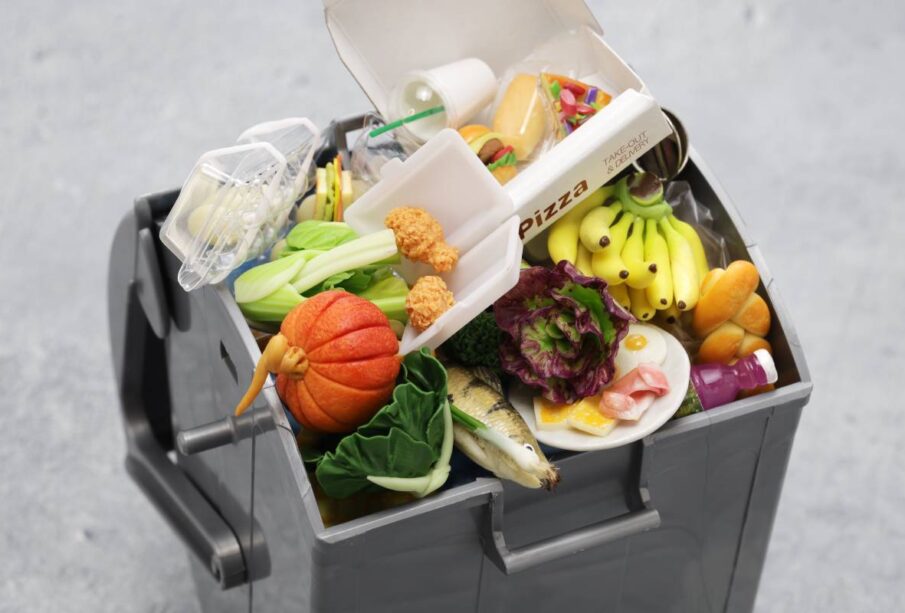What Is the Most Common Food Waste and How Can We Stop Wasting Food?

Food waste is one of the biggest environmental and economic problems facing the world today. From leftovers that end up in the bin to fruits and vegetables that spoil before we get the chance to eat them, the amount of food wasted globally is staggering. According to the United Nations, around one-third of all food produced for human consumption is wasted every year. This not only represents a waste of money but also of water, energy, and labour that went into producing that food.
In this article, we’ll take a closer look at what types of food are most commonly wasted, why it happens, and what we can do — both individually and collectively — to reduce food waste.
The Most Common Types of Food Waste
Food waste can occur at every stage of the food supply chain — from farms and food processors to supermarkets, restaurants, and households. However, most food waste happens at the consumer level, especially in households. Here are some of the most commonly wasted types of food:
1. Fruits and Vegetables
Fruits and vegetables top the list of the most wasted foods globally. Because they have a shorter shelf life than many other food items, they often spoil before being eaten. Common culprits include bananas, apples, berries, lettuce, and tomatoes. Many people also throw away fruits and vegetables simply because they don’t look perfect — for example, slightly bruised apples or oddly shaped carrots.
2. Bread and Bakery Products
Bread is another food commonly thrown away. In many households, loaves of bread go stale before they’re finished, or people buy more than they can consume. Supermarkets and bakeries also discard large quantities of unsold bread daily, contributing significantly to food waste.
3. Cooked Leftovers
Leftovers from home-cooked meals or takeout often end up in the bin. Many people either forget about them in the fridge or don’t feel like eating the same meal twice. This type of waste is particularly frustrating because it involves food that was already prepared using valuable energy and ingredients.
4. Dairy Products
Milk, yoghurt, and cheese are often wasted due to confusion over expiry dates. Many people throw these products away as soon as they pass their “best before” date, even though they are often still safe to consume.
5. Meat and Fish
Meat and fish have a relatively short shelf life and are expensive to produce. When these items are wasted, it represents not just a financial loss but also a major environmental cost due to the significant resources required to raise livestock and catch fish.
6. Rice and Pasta
Cooked carbohydrates like rice and pasta are often prepared in larger quantities than needed. Once cooked, they have a short lifespan in the fridge, and leftovers frequently end up being discarded.
Why Do We Waste So Much Food?
Understanding the causes of food waste is the first step toward finding effective solutions. Some of the most common reasons include:
Overbuying and Poor Planning
Many people head to the supermarket without a shopping list or a plan for their weekly meals. This leads to impulse buying and overstocking perishable items that spoil before they’re used.
Misunderstanding Expiry Dates
“Best before” and “use by” dates often confuse consumers. “Best before” refers to the period when a product is at its peak quality, but it doesn’t mean the food becomes unsafe after that date. “Use by,” however, relates to food safety and should be followed strictly. Misunderstanding these labels causes perfectly good food to be thrown away prematurely.
Portion Sizes and Overproduction
Restaurants and households alike tend to prepare more food than necessary. While large portions may seem generous, they often lead to uneaten leftovers that are discarded later.
Aesthetic Standards
Supermarkets and consumers often reject fruits and vegetables that don’t look “perfect.” This means millions of tonnes of edible produce are thrown away every year simply because they don’t meet cosmetic standards.
Lack of Storage Knowledge
Incorrect storage is another leading cause of food spoilage. For example, storing potatoes and onions together accelerates spoilage due to the gases they emit. Similarly, keeping milk on the fridge door exposes it to temperature fluctuations that reduce its shelf life.
How Food Waste Impacts the Environment
Food waste doesn’t just affect your wallet — it also has serious environmental consequences. When food is thrown away and sent to a landfill, it decomposes and produces methane, a powerful greenhouse gas that contributes to climate change. Moreover, the energy, fuel, and water used to grow, harvest, transport, and process the food are all wasted.
For instance, wasting one kilogram of beef means wasting over 15,000 litres of water used to raise the animal. Similarly, discarding fruits and vegetables means wasting the water and fertiliser used to grow them. Reducing food waste is therefore one of the simplest and most effective ways individuals can help combat climate change.
How We Can Stop Wasting Food
Reducing food waste doesn’t require huge sacrifices — it starts with small, practical steps at home and in the community. Here are several effective strategies to consider:
1. Plan Your Meals and Shop Smart
Before heading to the supermarket, take inventory of what you already have at home. Create a weekly meal plan and only buy what you need for those meals. Shopping with a list helps you avoid impulse purchases and reduces the risk of overbuying perishable items.
2. Store Food Properly
Understanding how to store food correctly can extend its life significantly. For example:
- Keep apples and bananas separate to prevent faster ripening.
- Store herbs like parsley and coriander in a glass of water covered with a plastic bag to keep them fresh.
- Freeze bread, cooked rice, and meats if you don’t plan to eat them soon.
3. Embrace Imperfect Produce
Buying “ugly” or misshapen fruits and vegetables helps reduce food waste at the farm and retail levels. These products taste just as good but are often discarded due to appearance alone.
4. Use Leftovers Creatively
Leftovers don’t have to be boring. Turn last night’s roast chicken into sandwiches or salads, or transform extra rice into fried rice or rice pudding. With a little creativity, you can give new life to leftovers and avoid throwing them away.
5. Understand Expiry Dates
Learn the difference between “best before” and “use by” dates. Foods that have passed their “best before” date are usually still safe to eat — check for any unusual smell, taste, or texture before deciding to throw them away.
6. Compost Food Scraps
Even with the best planning, some food waste like peels, cores, and eggshells are unavoidable. Instead of sending them to a landfill, compost them. Composting turns organic waste into nutrient-rich soil that can be used for gardening and farming.
In recent years, food waste composters have made this process even easier for households and businesses. These machines can process organic waste quickly and hygienically, reducing the volume of waste and creating valuable compost in the process.
7. Support Local Food Rescue Programs
Many organisations collect surplus food from restaurants, bakeries, and supermarkets to distribute to those in need. Supporting or volunteering for such programs not only reduces food waste but also helps combat hunger in the community.
The Role of Technology in Reducing Food Waste
Technology is playing an increasingly important role in tackling food waste. Apps like Too Good To Go and OLIO allow people to share or purchase surplus food at discounted prices, helping to prevent it from going to waste. Smart fridges can also track expiry dates and suggest recipes based on what’s inside, encouraging timely consumption.
At a commercial level, restaurants and hotels are using data-driven systems to monitor food waste and adjust purchasing or portion sizes accordingly. Similarly, advanced food waste composters can handle large volumes of organic waste, converting them into compost or renewable energy through anaerobic digestion.
Building a Sustainable Future Through Awareness
Ultimately, reducing food waste requires a shift in mindset. We must value food not just for its cost but for the resources and effort that go into producing it. By being mindful of what we buy, cook, and discard, we can make a significant difference to both our wallets and the planet.
Each small change — whether it’s freezing leftovers, planning meals, or composting — contributes to a larger, more sustainable solution. Governments, businesses, and households all have a role to play in ensuring that food is treated as the valuable resource it is.
Final Thoughts
Food waste is a global issue with local solutions. By understanding which foods are most commonly wasted and taking steps to reduce waste at home and in the community, we can help protect the environment and build a more sustainable future.
For households and businesses looking to take the next step in waste reduction, investing in a food waste composter from HASS Thailand is an excellent way to turn organic waste into something valuable. These composters make it simple to dispose of food scraps responsibly, helping you contribute to a cleaner, greener planet — one meal at a time.




